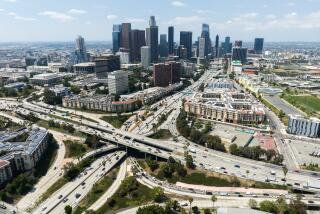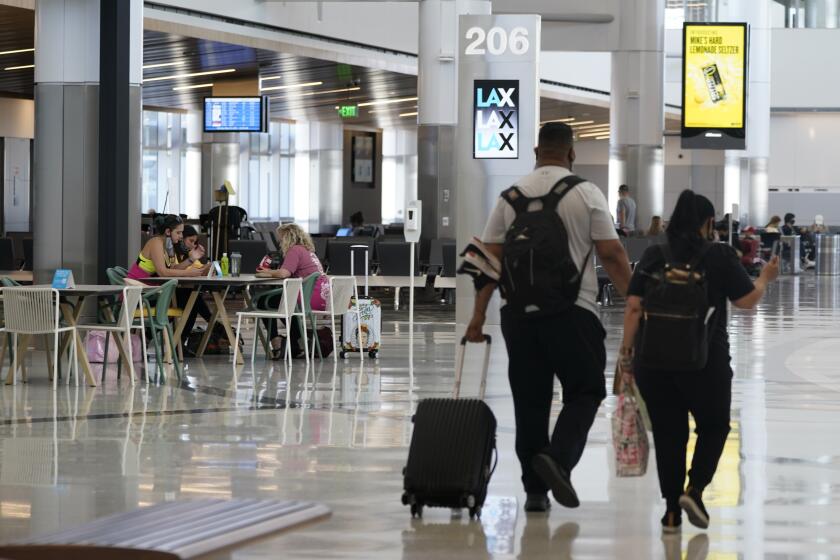Ever Harsher Reality for MTA
- Share via
A short, simple bus trip, west from downtown Los Angeles, leads to the latest fine mess the Metropolitan Transportation Authority has gotten itself into.
You’re a downtown worker and you need to pick up your car at a dealership on La Brea. The MTA’s route information folks suggest Bus Route No. 16, along West Third Street. But even at 1:30 p.m. No. 16 is crowded and often has standing room only. After you finally do get a seat, you promptly and properly surrender it to an elderly rider or a parent with children. You decide you’re never going to take the bus again.
The MTA is newly required, by court consent decree, to add more buses and ease overcrowding on busy bus routes. A lawsuit by riders argued that bus service had been unfairly impacted by the MTA’s push for rail construction. The court settlement that resulted from the suit represents a new expense to the MTA, and the long-range cost is unknown.
Even by conservative estimates, the city of Los Angeles is expected to have 820,000 new residents by 2010. Many are expected to be dependent on public transit.
The MTA, finally, admits it has a $1-billion funding hole in its 20-year plan. (And that’s after MTA officials had scoffed at a state audit in August warning of a $1-billion-plus shortfall in expected funds.) This reality sandwich has forced authority CEO Joseph Drew, his subordinates and the MTA board to confront tough choices.
Among them: whether to complete the Pasadena Blue Line Trolley on time by cutting into money for badly needed freeway carpool lanes, which themselves are already behind schedule; whether to keep rail construction on schedule by perhaps dipping into funds for municipal bus lines around the county . . . which sounds like the sort of thing that led to the bus riders lawsuit.
The MTA needs a wake-up, and may have gotten it. Officials now admit that its presumed agreement with the federal government for full subway funding by 2002 is a pipe dream. The authority would need $180 million a year for the next five years from a Congress that gave it just $70 million this year. The reality is that subway construction must be delayed on one or more rail line projects.
Should every other mass transit solution be sacrificed to keep rail funding current? The answer is no. Carpool lanes are very important, as are dedicated bus lanes and other alternatives. And they can be shifted rather quickly to react to predicted changes in transit needs, such as those resulting from the fact that population increases are expected in certain parts of the county while most of the new employment centers are expected to develop in other areas.
Perhaps, out of this mess, the county’s first sober and realistic long-range mass transit plan can finally emerge. Perhaps.
More to Read
Sign up for Essential California
The most important California stories and recommendations in your inbox every morning.
You may occasionally receive promotional content from the Los Angeles Times.










